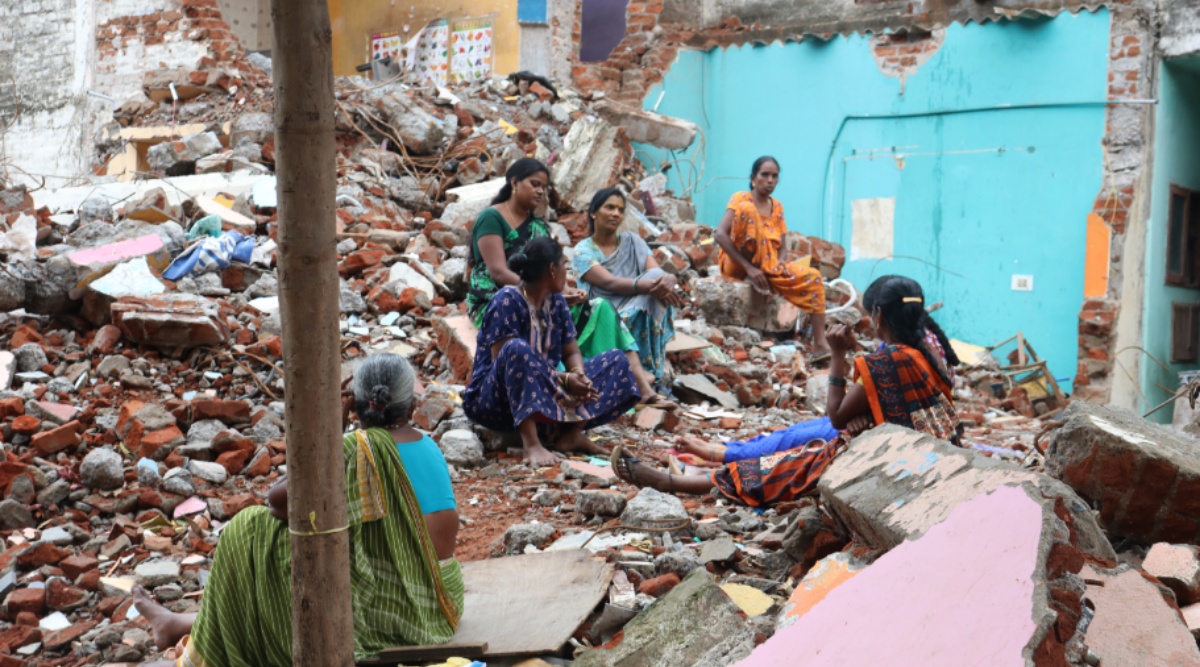In Chennai Enemy Property Dispute Sparks Eviction Crisis For Generations Of Residents
In Chennai enemy property dispute has thrown the lives of over 500 families in Ambedkar Nagar, Perambur, into uncertainty, as eviction notices have been issued for land they have called home for more than five decades. The land, originally owned by a Pakistani national, is classified under the Enemy Property Act, and the government has now directed residents to vacate it a decision that could leave entire generations without a place to live.
Ambedkar Nagar, a small settlement spanning just over three acres, has been home to three generations of families, most belonging to Scheduled Caste communities. Despite being in the heart of Chennai, the locality lacks basic amenities like proper roads, electricity, and drinking water because no government development is allowed on land classified as enemy property. For decades, residents have relied on nearby public taps for water and lived in huts or modest houses built with their own earnings.
In Chennai Enemy Property Issue Leaves Ambedkar Nagar Without Basic Facilities
The land was once part of a leather business owned by Naseer Hussain, who migrated to Pakistan in 1995. Following his departure, the property was declared enemy property under the Enemy Property Act of 1968. According to Indian law, such properties are placed under the Custodian of Enemy Property, and neither the original owner’s heirs nor current occupants have legal rights over them. There are more than 11,000 such properties in India, with 66 located in Tamil Nadu.
Residents say they were unaware of the land’s status until December 2024, when eviction notices were issued. They have since petitioned various government authorities, from local officials to former prime ministers, but with no resolution. The Madras High Court recently dismissed their plea to stay the eviction, citing the legal status of the land. Also Read: Aravind Srinivas Becomes India’s Youngest Billionaire At 31 With Rs. 21,190 Crore Fortune And Global AI Vision
Many families have deep emotional and historical ties to Ambedkar Nagar. Some, like Malliga, have lived there for three generations, building homes slowly with their earnings from domestic work. Others recall their parents’ employment in the now-defunct leather factory and how they settled nearby when no other housing was available. Despite possessing valid government identification, including voter and Aadhaar cards, the residents have never been granted proper infrastructure due to the property’s classification.
Residents of Chennai’s Ambedkar Nagar face eviction as land classified as ‘enemy property’https://t.co/z1xySfTDSF
— இராட்டை (@raattai) May 27, 2025
Residents have expressed willingness to purchase the land at a subsidised price, arguing that they cannot afford the government’s market rate of ₹2,700 per square foot. However, officials from the Custodian of Enemy Property have maintained that the land can only be sold at the official market value. This has left residents, many of whom are daily wage workers, with no viable alternative.
In Chennai Enemy Property Case Heads Toward Final Decision Amid Legal Setbacks
The issue has also highlighted a lack of political follow-through. Locals claim that while politicians visit during election campaigns and secure thousands of votes, they fail to address the community’s concerns afterward. Despite multiple petitions and meetings with top leaders, including former chief ministers and national figures, their living conditions remain unchanged.
With eviction looming, a final land survey is scheduled, which could determine the fate of Ambedkar Nagar’s residents. Their plea remains simple: either allow them to buy the land at an affordable price or provide an alternative housing solution.
Conclusion:
In Chennai enemy property dispute is more than a legal issue it is a humanitarian crisis affecting generations who have built their lives on disputed land. As authorities prepare for the next steps, the fate of more than 500 families hangs in the balance, reflecting a broader challenge of balancing historical property laws with present-day human realities.

